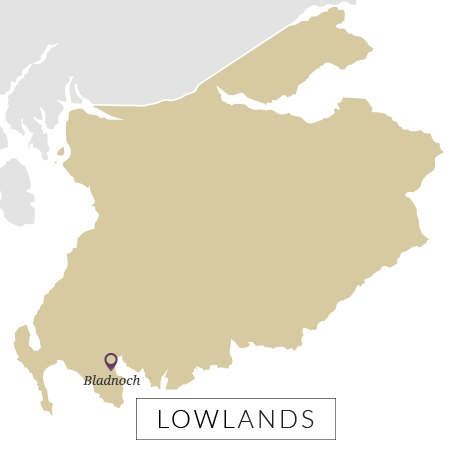Bladnoch Distillery Forum
Online fan club run by the former owners of Bladnoch distillery, and bottler of single cask whisky.


Production-wise its style varied. At the start of the Bell’s era it was light and floral, but the blender’s template of nutty and spicy became the norm towards the end of its ownership. When distilling started again in 2000 the old, more delicate, style was reintroduced – which explains the variation in character in official bottlings. Some peated malt was also run in the Armstrong era, a period which also saw the firm expand into independent bottlings – all of which were sold at incredibly keen prices.
Today, under the auspices of Australian owner David Prior, Bladnoch produces a light, grassy and malty Lowland-style malt.

It was 1817 when John and Thomas McClelland took out a licence to make whisky on their farm in the hamlet of Bladnoch near Wigtown in the far south-west of Scotland. It stayed in family ownership until 1905, when it was one of many stills to close during a period of over-supply and low sales.
Bladnoch is not far from the sea crossing between Stranraer and Larne and twice in its history its saviours have come from Northern Ireland. The first of these was Belfast distiller Dunville & Co. which owned the Royal Irish distillery. It bought Bladnoch in 1911 and continued production – albeit intermittently – until 1937. At that point, Dunville’s directors were spooked by (Scottish-based) DCL’s declaration that Irish whiskey had no future. After DCL turned down the chance to buy the firm, it went into liquidation, despite being profitable and having stock. Bladnoch was closed once more.
Worse was to follow. Its new owner, Ross & Coulter, sold off Bladnoch’s mature stock and sent the distilling equipment to Sweden – and so the story continues, with owners coming and going at rapid rate. Bladnoch reopened in 1956, was expanded to four stills in 1966, became part of Inver House for a decade, and then in 1983 was bought by Arthur Bell & Son. After Bell’s was taken over it was folded into Guinness/UD [now Diageo] and production once again slowed. In 1993, it was officially decommissioned.
The year after, however, two brothers from Northern Ireland bought it with the initial idea of turning the extensive site into a holiday village. A change of heart soon after saw them wishing to start making whisky again – contrary to the terms of sale. It took six years to persuade Diageo to allow them to make 100,000 litres a year – below capacity and as it turned out right on the limits of profitability.
Most of the distillery’s income came from tourism, events and the extensive warehousing rented out to other producers. Production remained intermittent with mothballing taking place in 2009/10. In 2014, the brothers placed it into administration.
In July 2015 Australian businessman David Prior, along with ex-Scotch Whisky Association CEO, Gavin Hewitt, announced the purchase of Bladnoch and plans to restore the distillery to its former glory.
Ahead of its reopening in 2017, three single malts created using existing stocks of Bladnoch (Samsara, Adela and Talia), were released in limited quantities in Australia, the UK and other global markets.
Production at Bladnoch offically restarted in June 2017, with the flow of a grassy, malty Lowland-style spirit.
Visitor centre to open in late 2017


 Independent bottler
Independent bottler
Online fan club run by the former owners of Bladnoch distillery, and bottler of single cask whisky.